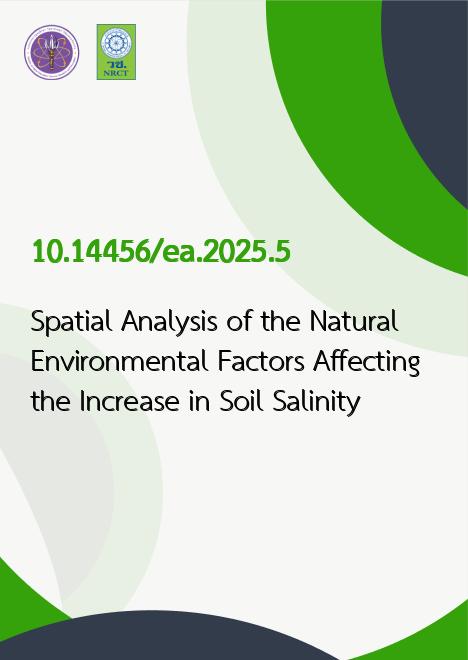
|
Spatial Analysis of the Natural Environmental Factors Affecting the Increase in Soil Salinity |
|---|---|
| รหัสดีโอไอ | |
| Creator | Basim A. Almayahi |
| Title | Spatial Analysis of the Natural Environmental Factors Affecting the Increase in Soil Salinity |
| Contributor | Safaa M. Almudhafar, Bneen M. Hamza |
| Publisher | Thai Society of Higher Education Institutes on Environment |
| Publication Year | 2568 |
| Journal Title | EnvironmentAsia |
| Journal Vol. | 18 |
| Journal No. | 1 |
| Page no. | 49-61 |
| Keyword | Geographical phenomenon, Natural factors, Human factors, Topography, Climatic characteristics |
| URL Website | http://www.tshe.org/ea/index.html |
| Website title | EnvironmentAsia |
| ISSN | 1906-1714 |
| Abstract | This research analyzes natural environmental factors affecting soil salinity inAl-Qadisiyah, Najaf, Iraq. Using ArcMap 10.6. Key influences, including geologicalstructures, topography, climate, and water quality are examined. Soil and water sampleswere assessed for pH, electrical conductivity (EC), total dissolved solids (TDS), andion concentrations. Results showed that EC values ranged from 0.69 to 1.9 Siemens/cm,and TDS values varied from 441.6 to 1216 mg/L, with several sites exceeding theirrigation suitability limits set by the FAO. Alkalinity (bicarbonate) levels were also evaluated,with values ranging from 126 to 194 mg/L across different locations. pH levels variedsignificantly, from 7.1 to 8.15, influenced by agricultural runoff and waste. Statisticalanalysis indicated weak positive correlations (between temperature and EC, ?? = 0.12)and some inverse relationships, such as between temperature and Na+ concentration(?? = ? 0.38), suggesting that high temperatures intensify salinity by increasingevaporation. The results reveal that flat terrain and poor drainage further enhance saltaccumulation, making most local water sources unsuitable for irrigation and challengingsustainable agriculture in the region. |